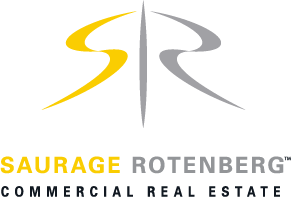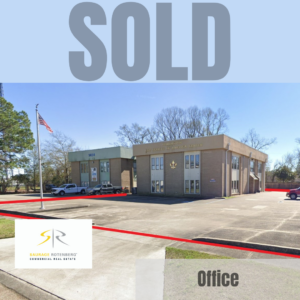Article written by Jim Allen, Sales and Leasing Agent at Saurage Rotenberg Commercial Real Estate
Real estate investments are sometimes valuated based on prices of comparable properties or on the adjusted construction cost to construct a property. Investors are more prone to look at the Cap Rate (capitalization rate or overall rate). The Cap Rate is the rate at which a stream of payments over time convert to an amount of capital.
The formula for the capitalization rate is:
Property NOI / Property Value= Cap Rate
NOI is essentially the cash flow of an income property. Beginning with Potential Gross Income (PGI) the analyst or appraiser deducts the Vacancy & Bad Debt loss to provide a discounted or Effective Gross Income. Deducting the Operating Expense produces the Net Operasting Income (NOI). Components of operating expense include management fees, operating expenses, property taxes and insurance (but not income taxes) and reserves and miscellaneous items. NOI represents cash flow before income taxes and depreciation, interest expenses, principal debt service and distributions to owners. The NOI is used to calculate annual debt service capacity, cash flow after debt service and the Cap Rate.
Once the NOI is determined the second variable, Property Value, must be determined. The property value and the Cap Rate reflect a number of variables. First, the risk perception associated with a specific type of property in a specific market. A single tenant property in a declining market with special features will normally require a higher return (a lower Cap Rate) than a multiple tenant property with a “national or low risk tenant” in a growing market.
Second, the current interest rate environment is a factor in determining the property value and the Cap Rate. If interest rates are in the double digits the investor is looking for a higher Cap Rate than in a 3% interest rate environment.
Third , the investor is expecting to receive a yield at least equivalent to the yield on a financial instrument with similar risk. The Cap Rate on a property reflects the return an investor wants for the perceived risk.
The higher the capitalization rate, the lower the numerical value calculated. There is an inverse relationship between Cap Rates and value. When market return expectations increase, a static NOI or cash flow is worth less in the market place. Cap Rates can be determined in a complex formula based on return expected on the debt portion of an investment and the return sought on the equity in an investment. More commonly, the sales price of similar income properties is
used to estimate the denominator in the equation—the value. Consult an appraiser, your real estate agent or someone in the real estate department of a bank to estimate the value of the property.
To view this weeks feature property click here.
Jim Allen earned his bachelor’s degree from Baylor University in Waco, Texas and his masters from Louisiana State University. In addition to his multiple degrees he has taken numerous coursework in banking, marketing, accounting, and business law. As a complement to his sales experience, Jim also has 25 years experience in commercial real estate financing.
Saurage Rotenberg Commercial Real Estate is a member of the Baton Rouge Area Chamber of Commerce (BRAC); the West Baton Rouge Chamber of Commerce; the Baton Rouge Growth Coalition; the Baton Rouge Better Business Bureau; the Louisiana Commercial Data Base (LACDB); and the International Council of Shopping Centers (ICSC). Several agents, on an individual basis, are members of the Society of Industrial and Office Realtors® (SIOR), the Certified Commercial Investment Member Institute (CCIM); the National Association of REALTORS® (NAR); and the Greater Baton Rouge Association of REALTORS® Commercial Investment Division (CID).




